Summer 2025 | VOLume 91, NO.4

PAGE 9

Summer 2025 | VOLume 91, NO.4

PAGE 9
Lori Jeschke, Jane Macleod and Tony Linner are honoured for their exemplary contributions to the teaching profession.
PAGE 4
2023-2026 Provincial Collective Bargaining Agreement

What you need to know about the new, historic PCBA.
PAGE 24
Retirement Ready
Advice from the Superannuated Teachers of Saskatchewan.
PAGE 31
Changes to Members’ Health Plan
Find out why a drug deductible is being introduced.
Summer 2025 | VOLume 91, NO.4
ISSN 2816-3885 (Print)
ISSN 2816-3893 (Digital)
The Saskatchewan Teachers’ Federation Bulletin is published four times during the school year and is distributed both electronically and in print.
Have a story idea or a topic you would like us to include? We’d love to hear from you. Reach us at stfcommunications@stf.sk.ca
For our current advertising rate card or to book an advertisement, please contact stfcommunications@stf.sk.ca
Editor: Courtney Forseth, Managing Director of Communications and Public Relations
www.stf.sk.ca
@SaskTeachersFed
©2025. For permission to reprint, please contact the editorial office. Indexed in the Canadian Education Index ISSN 0036‑4886

This is the first time in two years where bargaining and job action aren’t the focus of my update in the STF Bulletin. As you’ll already know, on April 3, bargaining officially came to an end as we signed the 2023-2026 Provincial Collective Bargaining Agreement. I am extremely proud of what we accomplished together and for what is yet to come.

As the new Agreement is implemented and planning for the next round of bargaining begins, my primary focus is on continuing to foster a strong, engaged and active STF membership, followed by more positive relationships with our sector partners. Teachers, division administration, trustees and government all have the same goal: to ensure students have access to the supports and resources they need for a high quality public education. While there may not always be agreement across the sector on exactly how to accomplish this, we must work together in a respectful, honest and collaborative manner so that trust can be rebuilt and we can achieve our mutual objectives.
Annual Meeting of Council has a long history of providing a forum for teachers to hear from other education sector leaders. According to STF archives, the long standing tradition of the Minister of Education attending AMOC began at the 2nd Annual Meeting of Council in 1936. I am pleased that this year we were able to host Hon. Everett Hindley. I sincerely appreciate Minister Hindley taking the time to address Council and take questions from the audience. Council also heard from other sector partners, including Canadian Teachers’ Federation President Heidi Yetman, Saskatchewan School Boards Association President Shawn Davidson, and Ben Grebinski of the Saskatchewan League of Educational Administrators, Directors and Superintendents.
Councillors debated and voted on more than 60 resolutions and six STF Executive election positions. I am honoured and humbled to have the opportunity to lead the STF as your President for another two years. I’d also like to extend congratulations to my STF Executive colleagues who were re elected: Nathan Bromm as Vice President, Amy Korver, Whitney Paul Joseph and Peggy Welter as members at large, and Daniel Dion, who was elected for his first term to the Executive as member at large.
Thank you to everyone who ran in the STF Executive elections. As a democratic organization that depends on an engaged membership, this is a crucial component to our success. I encourage each of you to consider how you can take an active role in your STF – whether it’s through the STF Executive, a role on your local association executive or local implementation and negotiation committee, as a local association councillor, school staff liaison or a member on one of the many STF committees.
As the school year winds to a close, I wish you all the best in these final weeks and for your summer break. For those of you retiring this year, thank you for your professionalism and dedication. You’ve helped create a brighter future for your colleagues, students and public education.
Samantha Becotte
Saskatchewan Teachers’ Federation President


BY: STAFF WRITER
On April 3, representatives of the Teachers’ Bargaining Committee and Government Trustee Bargaining Committee met to make the new Agreement official and sign the 2023-2026 Provincial Collective Bargaining Agreement. This marked the end of nearly two years of bargaining, which included the longest teacher job action in Saskatchewan’s history.
“The tenacity of teachers and support of the public paid off,” says STF President Samantha Becotte. “We’ve been working to secure language on class complexity in the PCBA for a decade. The new Agreement doesn’t just reference class complexity, it includes an entire new article on the matter. This is a significant milestone.”
Once the PCBA was signed, staff immediately turned their attention to implementation. This included a series of online information meetings for local association presidents, principals and vice principals, school staff liaisons and all members. In person implementation meetings with the Saskatchewan School Boards Association and the STF were scheduled for mid May; however, the STF was informed the GTBC required additional time to discuss the PCBA implementation with their administrative and governance teams; therefore, the STF did not participate in these meetings.
As implementation work continues, the STF will also begin preparations for the next round of bargaining. This Agreement expires August 31, 2026, and the new round of negotiations could begin as early as May 2026.
STF Executive Director Angela Banda says preparations will involve consultations with members. “We take direction from Saskatchewan teachers. Through consultations and member engagement, members tell us what issues matter most for the upcoming round. Consultations will likely include a combination of surveys, focus groups and other formal and informal methods.”
Proposals for bargaining must be approved by Council. It is anticipated proposals for the next round will be presented at the Annual Meeting of Council in April 2026.
“The new Agreement doesn’t just reference class complexity; it includes an entire new article on the matter that contains half of the proposals advanced by teachers. This is a significant milestone.”
BETWEEN THE BOARDS OF EDUCATION AND THE GOVERNMENT OF SASKATCHEWAN AND THE TEACHERS OF SASKATCHEWAN



þ Preamble on Truth and Reconciliation
þ Article 2: Salaries
• 4% retroactive to September 1, 2023; 3% retroactive to September 1, 2024; 2% effective September 1, 2025.
• Elimination of Step 1 on the grid.
þ Article 4: Principal, Vice-Principal and Assistant-Principal Allowances
• 4% increase retroactive to September 1, 2023; 3% retroactive to September 1, 2024; 2% effective September 1, 2025.
• Non teaching personnel allowances increase from 0.25 to 0.33 FTE and include caretaking staff.
• Protective provisions increased from three years to five years, effective August 31, 2023.
þ Article 8: Supplemental Employment Benefits
• Eligibility is expanded to include the designated parent of an adopted child and a designated parent who uses surrogacy.
• All eligible teachers are now entitled to 90 days of supplemental income regardless of when the leave begins.
• All changes are retroactive to September 1, 2023.
þ Article 15: Grievance Procedures
• Steps taken between the STF and GTBC to resolve the grievance will take place within two days before proceeding to the next phase.
• Pending a judicial review, a Letter of Understanding on representation of substitute teachers will be added to the PCBA.
• Increases to procedural rights in disciplinary meetings.
þ Article 17: Class Complexity *New Article*
• More than 500 additional teachers in all school divisions to address class complexity.
• $20 million/year class complexity fund distributed among divisions.
• Letters of Understanding on a Ministry Led Task Force on Complexity/Classroom Supports and a Policy Table on Violence Free Classrooms.
þ Article 18: Accountability Framework *New Article*
• The Memorandum of Understanding on the Accountability Framework will be honoured and followed.

BY: LYLA PHILLIPS, MICHIF/MÉTIS RESOURCE LIAISON, SASKATOON PUBLIC SCHOOLS

Tawnishi keeyawow? Lyla Phillips dishinihkawshoon. Rocanville d’oshcheen
maga maygwaatch a Saskatoon ni weekin. Ma parawntee si lee Desjarlais, Pelletier, Sayer, akwa Friebus. Rocanville, Moose Jaw, St. Francois Xavier, akwa Red River oushcheewuk.
Ni gishcheetayimoon een Michif wiiyaan. Gishcheetayimoon aan Michif kaw peekishkwawn. Ma laang Michif kaw kakway bawshpihtawn.
Tawnishi keeyawow? I am Lyla Phillips. I am originally from Rocanville but currently live in Saskatoon. My family connections are to the Desjarlais, Pelletier, Sayer and Friebus. My ancestors are from Rocanville, Moose Jaw, St. Francois Xavier and Red River. I am proud to be Michif. I am proud to speak Michif. I am trying to save my language, Michif. I enjoy spending time outdoors, traveling and visiting with my loving family. Additionally, I thrift for unique treasures, always make time for puppies, learn the beautiful Michif language, and I love, love, love being immersed in the vibrant Michif community.
I received my bachelor of education degree from the University of Saskatchewan through the Gabriel Dumont Institute’s SUNTEP in 2016. Throughout my life, I have always been proud of my identity and curious to learn more about my heritage. At SUNTEP, we focused on connecting and creating a community of learners centred around cultural education. One pivotal moment in my journey was a workshop with Michif speaker Norman Fleury. I found Michif fascinating and enjoyable when repeating phrases, which sparked my initial interest in Michif language. Afterwards Mooshoom Norman shared stories and memories of speaking Michif with my Grandpa Freeman (Edward Desjarlais). I needed to know more about what happened to Michif in my family; this began a journey, driven by a deep passion for reconnection, and for preserving and promoting Michif language.
One of my favourite places to practice and hear Michif is online at Gabriel Dumont Institute’s Virtual Museum. Have a little visit to listen to and repeat some of the phrases.
Michif Greetings and Niceties:
• Taanishi – Hello
• Piihtikway – Come in
• Maarsii – Thank you
“My primary focus as the Michif/Métis resource liaison is sharing and promoting the Michif language, which comes from a delightful mix of Cree verbs and French nouns. There are less than 30 fluent Michif speakers in the world.”
Currently, I work with Saskatoon Public Schools as the Michif/Métis resource liaison. Over the years, I have held various roles within SPS, focusing on the inclusion of Michif/Métis content and perspectives. As the Michif/Métis resource liaison, I provide leadership and work closely with schools and classrooms throughout the division to embed values, culture and language throughout the curricula. The inclusion of Michif/Métis perspectives in education fosters a more inclusive and diverse learning environment. Many conversations about my culture become a chance for others to share about their culture(s). This helps improve student learning outcomes by providing them with a more comprehensive understanding of the world and promoting respect for all cultures.
Central Urban Métis Federation Incorporated, a Métis local in Saskatoon advocated for the creation of this
• Kaawapamitin – I will see you again Scan to visit Gabriel Dumont Institute’s Virtual Museum.
role approximately eight years ago. This position has motivated me to learn language at a propelled rate and continue the path of language learning. I will always be grateful for their advocacy for language and cultural inclusion in schools. The connections fostered through this teaching position have created a sizable community of passionate educators who support one another. A great example of this is the fantastic Michif Language Camp that CUMFI hosts in August at Batoche.
As I embarked on my role, I recognized the necessity of deepening my knowledge of the Michif language. At the time there were Michif classes at the Friendship Centre. There I met Brousse Flammand (Bruce Flamont), a Michif speaker who has significantly contributed to my understanding and appreciation of culture and language. Brousse still supports class participants and me in various capacities. This shows that the creation of positions like this are needed as a catalyst for enhancing connections between schools and Michif/Métis communities.
My primary focus as the Michif/Métis resource liaison is sharing and promoting the Michif language, which comes from a delightful mix of Cree verbs and French nouns. There are less than 30 fluent Michif speakers in the world. Many speakers are determinedly working with learners to reclaim, teach, share and speak Michif. I am very fortunate to be one of these learners. I have learned that Michif language carries the values, traditions and humour of our culture; it has shaped our identity and connects us to our heritage. By weaving Michif phrases into hands on

cultural activities, my hope is to encourage even more Michif/Métis people to reclaim their language, begin to, and continue to speak Michif. It is such an exquisite language filled with love, honesty and humour. We need language and culture to thrive simultaneously to stay connected to the heart of who we are as Michif people.
Additionally, outside of my professional duties, I work within the community for other organizations and Métis locals across the province in language and cultural reclamation work. As a member of Gabriel Dumont Local 11, I have supported Michif language classes and projects. Through puppeteering as Michif Old One, Koohkoom Rose, we have tried to teach the youngest of learners Michif. Koohkoom’s better half, Mooshoom Joe, keeps parents engaged with his quick wit and funny jokes. I do this work to give back to the Michif Old Ones and the Michif community that guides me.
My hope is for our young ones to one day be linguistically, culturally and academically thriving because they see and know their culture is reflected in all areas of the curriculum. I often think of the joy, guidance, encouragement, amazement and pride speakers have for those who are learning Michif. I want all students to receive that level of support, regardless of their cultural b ackground.
Through the role of Michif/Métis resource liaison, I have gained an understanding of the power of community connections, community advocacy and collaboration. The friendships and connections I have forged through Michif language are lifelong and have evolved into an extended family. Working with various stakeholders, including schools, locals and volunteers, has shown me that collective efforts can lead to significant positive changes.
Moreover, understanding and appreciating the advocacy of those who came before us is crucial. Their dedication and hard work have paved the way for future generations to continue making a difference. Being aware of their contributions and feeling grateful for their efforts inspires and empowers us to carry on their legacy, ensuring that our collaborative endeavours are both impactful and sustainable. I suppose that is why the Métis community is exceptionally supportive of Michif/Métis individuals striving to reclaim Michif language or cultural traditions. We have this way of uplifting one another and encouraging the talents or interests of good hearted people in the community. We know there is still a lot of work to do and that it is never too late to start learning something new.
Kishchi maarsii for listening to my language learning journey. Kishchi maarsii to those who have dedicated their careers to revitalizing the Michif language and culture.

The Arbos award is the highest honour that the Saskatchewan teaching profession can bestow. Since 1951, the Saskatchewan Teachers’ Federation has recognized individuals who have distinguished themselves through the scope, impact and significance of their educational contributions to public education and to the teaching profession. Each Arbos award includes honorary lifetime membership in the Federation, along with the presentation of an Arbos statuette at the Federation’s Annual Meeting of Council.

Jane Macleod was born and educated in Nova Scotia, where she received a bachelor of arts degree. She enrolled in the University of Saskatchewan’s two year teacher education program and began her career in Saskatchewan, teaching with some amazing and legendary educators during an internship in Saskatoon and again while working in Radisson and Asquith.
ARBOS FOR CONTRIBUTIONS TO EDUCATION AND THE TEACHING PROFESSION
Her interest in professional issues, and the influence of mentors such as Heather jane Robertson, Ruben Richert and Harold Schultz, saw Macleod become involved in Federation activities. She spent 14 years with Saskatoon Public Schools as a teacher, vice principal and principal, during which time she completed a master’s degree in education administration.
Macleod’s passion for professional learning brought her to the Federation as Director of the Saskatchewan Professional Development Unit where she worked closely with inspirational educators such as Gwen Dueck, Kit Loewen and Ken Moore, among others.
Macleod embarked on an international career in 2005 as a consulting principal with the International Education Agency in Papua New Guinea. During the same period, Macleod began doctoral studies with the University of Calgary, studying the connection and adaptation required of traditional Papua New Guinean school leaders when working in a western educational environment. She successfully defended her doctorate in 2013.
In 2009, she joined the Abu Dhabi Education Council as a cluster manager, working closely with Emirati teachers and principals for eight years. In addition to supporting school improvement in government schools across Abu Dhabi, Macleod was responsible for the recruitment and onboarding of hundreds of English speaking teachers from all around the world. Her final year in Abu Dhabi was spent working with Vanderbilt University as the project manager for a principal leadership development program.
Macleod rejoined the STF as a member of the Research and Policy unit upon her return to Saskatoon in 2017, working as senior manager until retirement in 2022.
In retirement she continues to be involved in professional research, educational consulting and strategic planning, school reviews or evaluations, and professional editing.
Q WHAT INSPIreD YOu TO PurSue A CAreer
My mother and grandmother were educators. In fact, in the early 1900s, my grandmother travelled by train from Nova Scotia to Edmonton to teach music at the University of Alberta. More than half a century later, I imagined that I was following in her footsteps when I boarded the train in Amherst, Nova Scotia, heading for Saskatoon.
I always wanted to be a teacher. I recall that as a young child, I would hold chalk in my hand and stand beside the blackboard on the back of my bedroom door and teach my stuffed animals whatever concept I was learning in school at the time.
I love the energy and the joy of connecting with students, colleagues, teachers and school leaders. I love the process of learning and the sense of possibility and opportunity for both the student and the teacher.
WHAT CAreer ACCOmPLISHmeNTS Are YOu mOST PrOuD OF?
My personal memory book has a few examples of my proud moments. My work with the Women in Education Committee in the early ’80s always brings smiles. I was one of “those women” who travelled the province leading women’s assertiveness training workshops. I’m pretty sure we sparked some lively conversations in staff rooms on Monday mornings following the weekend’s training!
I’ve been involved in three McDowell Research Into Teaching projects and each one has brought not only a sense of accomplishment to the research team, but also a sense of pride knowing that we had contributed to the wider field of action research.
I’m proud of the professional learning SPDU provided to teachers and school administrators across Saskatchewan as well as across Canada. I believe our facilitators modelled a learning process that truly reflected the principles of active adult learning – for teachers, with teachers and by teachers.
Thanks to my University of Calgary doctoral supervisors, and especially Jackie Ottman, I’m proud that I was able to complete my dissertation in a way that reflected and respected the Indigenous identity of the participants rather than presenting them as cultural and stereotypical Melanesian “others.”
I’m proud of the team I built in Abu Dhabi. Again, the recruiting and on boarding of so many teacher families from around the world took commitment and long hours of helping hundreds of educators navigate the challenges of being successful in another country.
Finally, I’m proud of the work we did on STF’s ReImagine Education project. I believe that each of the reports invited people to reconsider traditional assumptions about the purpose and delivery of education in Saskatchewan today.
Q WHAT ADVICe WOuLD YOu GIVe A NeW TeACHer?
Hold your head up. Stand proudly for what you do. You will have many people looking over your shoulder and telling you what to do. Trust your good judgment and your instincts, rely on your knowledge of children and learning, and surround yourself with trusted voices. As a good friend once said to me, “Look for those whose eyes light up.”
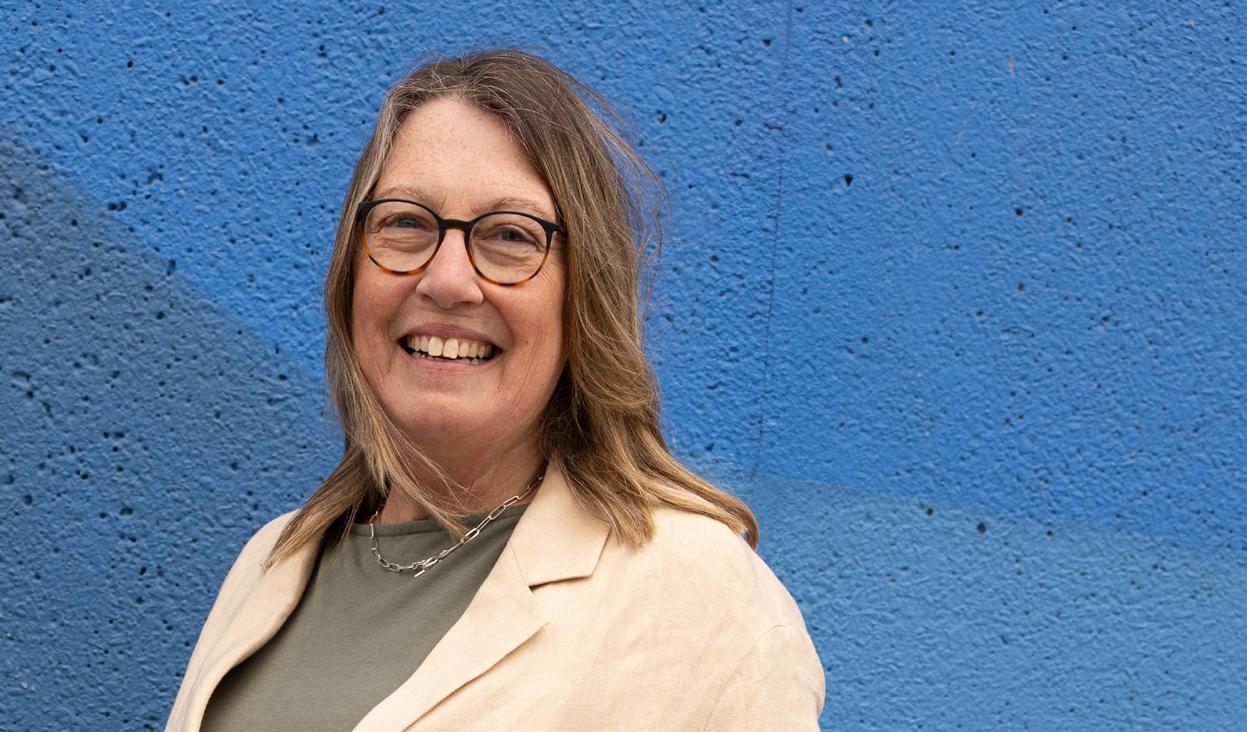
You could say the motivation for Lori Jeschke’s teaching career arrived through the mail.
When she graduated from Grade 12, her first job was with Canada Post, but it didn’t take long to realize that being a teacher was her true calling. It was a realization inspired by a love of teaching and learning instilled by her father, Art Priebe, an elementary school teacher for 30 years, and her mother, Clara Priebe, who taught piano for almost six decades.
Jeschke earned an education degree from the University of Saskatchewan in 1987 and began her teaching career with 36 students in a kindergarten, Grades 1 and 2 classroom at Laird School in the former Sask Valley School Division. During her eight years in Laird, she also taught Grades 5 and 6 and classes in Grades 7 and 8 and finally became principal in her last year there. A move to Hepburn School, where she remained for 12 years, brought Jeschke together with her father who taught Grade 4 in a classroom right across the hall.
After serving as vice principal and principal at Hepburn, Jeschke took on the role of human resources principal for the Prairie Spirit School Division. That led to further leadership opportunities as coordinator of assessment and learning, superintendent of learning and leading, and four years as director of education before her retirement in 2021, following a 34 and a half year career in education.
Jeschke’s professional contributions included two terms as president of the Canadian Assessment for Learning Network and two years as co chairperson of the Saskatchewan director group in 2019 20. She co facilitated national and international leadership and assessment opportunities and co wrote Residency: Powerful Assessment and Professional Development (2016). Jeschke was a contributor with several authors writing on the topic of assessment and was one of the 108 irregulars for Michael Bungay Stanier’s book How to Work With Almost Anyone (2023).
ARBOS FOR DISTINGUISHED SUPPORT OF EDUCATION AND THE TEACHING PROFESSION
Lori Jeschke remains a passionate and dedicated educator after a varied and well rounded career serving and supporting learners and learning.
Q WHAT INSPIreD YOu TO PurSue A CAreer IN eDuCATION?
My parents were really passionate about serving and learning. I’m told that when I was three and four, I had stuffed animals lined up on stairs and around tables and I was teaching. I know that teaching was planted in my heart really early on. When I was in my teenage years, my dad was a classroom teacher and coach and he gave so much of his time and energy to his work, I thought that other kids got more of his time than I did. He impacted so many kids and families, and I knew that was who I wanted to be, too.
Q WHAT DID YOu FIND reWArDING ABOuT YOur WOrK?
The rewarding part of my work, I think, is just the beauty of being part of getting to learn and lead alongside so many incredible educators. At the heart of our work is always the goal of finding ways to support students and teachers. A huge part of that for me was our annual Learning for Life presentations from our schools and staff. Hearing stories from students, teachers, staff, school community council members, parents and administrators about what worked and what didn’t and then what they planned to do next, was inspirational for me. We got to celebrate learning for life as a school division.
Q WHAT CHALLeNGeS DID YOu FACe DurING THe COurSe OF YOur CAreer?
The challenges, in a broad sense, would be the many hats that a teacher wears. Teachers are asked to be and do so many different things in a day. It’s quite remarkable. There are so many complexities around the charge of caring for
small humans and big humans. They need to feel safe, feel cared for, and be successful. It’s not really something you learn in university courses. You don’t learn about how it feels to suddenly remember late at night that you promised one of your students you’d listen to their story and you forgot, or noticing someone didn’t have very much in their lunch, or how there were teachers in your staffroom who were trying to tell you they were just too tired and
Tony Linner (BA 1970, B.Ed. 1972, PGD Ed Psych 1982) began his teaching career in the fall of 1972 with a contract at Riverside Collegiate in the Prince Albert Public School Division. Two years later he moved to Saskatoon Public Schools, teaching at Nutana and Mount Royal collegiates, as well as a guidance counsellor at Riverview Collegiate. In 1985, he became principal of Macklin School, a kindergarten to Grade 12 school located in the former Kerrobert School Division.
Linner joined the STF’s senior administrative staff in August 1987. He identifies coordinating summer short courses and teacher exchange programs, pre retirement seminar presentations, supporting the Income Continuance Plan and Counselling Services, and working with local associations on LINC negotiations as highlights, along with the opportunity to work closely with the STF support staff. Linner retired in 2002 after 15 years of service to the Federation.
He had served as a sessional lecturer in educational psychology and following retirement, Linner continued to share knowledge gained as a teacher, counsellor and administrator in several ways: as a lecturer in educational administration at the University of Saskatchewan, a College of Education admissions interviewer, an instructor at Prairie West Regional Community College, and as an educational consultant with the Saskatchewan Office of the Treaty Commissioner.
Beyond education, Linner held leadership roles with several community and business organizations. He was on
you still had them sit through a presentation at a staff meeting. Those are pieces of your heart that get tugged time and time again and you try to pay close attention every day so that you can do your best. I sometimes wonder what people would do if they had a camera in a classroom and saw all the things a teacher is actually handling throughout the day. I hope they would say “thank you!”

the board of TCU Financial Group for 18 years and was a public representative on the Saskatchewan Association of Licensed Practical Nurses board of directors, receiving an Honorary Member Award in 2013. He was a board member of Nutana Curling Club and served as president in 2021 22.
Q
I loved the challenge of each new teaching year and each new semester. I have many occasions even today to meet former students and smile in knowing how well they have done in so many varied careers. Teaching is a lifelong endeavour, and I have been fortunate to be in situations where I have been able to continue learning and challenging myself as a teacher, guidance counsellor, administrator and person.
Q WHAT CAreer ACCOmPLISHmeNTS Are YOu mOST PrOuD OF?
Any accomplishments I have are a product of the wonderful people I have worked with over the years such as Bill Watson at Riverside, Harvey Morissette in Macklin and Derwyn Crozier Smith at the STF. These educators were all encouraging and supportive in different times and in diverse ways and exemplified my belief that all teaching is about giving and growing with your students and colleagues. I guess the greatest accomplishment I have is in our three children, their partners and our grandchildren as we encourage them to continue learning and moving forward in their lives and careers.
If I could give a new teacher advice it would be to simply remind them never to give up on anyone – a student or a colleague or yourself. We all grow in different ways and at different times. Be patient. Listen and observe. I saw so many students and teachers grow and perform exceptionally well when provided encouragement and support, and I saw virtually no one grow under the threat of criticism and discouragement. Teaching is hard work. Get to know your strengths and weaknesses and never pass up an opportunity to learn a new skill or strategy to keep in your toolbox of professional expertise.
Q
Without a doubt, the person who helped shaped my life and leadership approach has been my partner for the past 50 years – my wife, Donna. Donna is a gifted professional educator and was always there to offer me support, encouragement and constructive criticism as we moved from one position to another in our educational journey.
Teaching provides many valuable lessons, not the least of which are humility and personal and professional honesty. Also, I became a lifelong learner and seized the opportunity to develop new skills and strategies to be a strong professional and person. I learned to share what I had with others, and I became a strong believer in summer short courses and professional development programs to always keep on learning. I did not set out to become an administrator or a guidance counsellor or a sessional lecturer but the learning opportunities I took and challenges I encountered helped me to succeed at each level. I guess it pays to have an inquisitive mind!
Learn responsive strategies for the complex classroom
Shape trauma-sensitive spaces
Develop confidence in your abilities Advocate and work toward well-being TRAUMA-INFORMED/SENSITIVE PEDAGOGIES & PRACTICES

BY: JACKIE PEAT, PRINCIPAL AT ÉCOLE ST. ELIZABETH AND PRESIDENT OF SASKATCHEWAN SCHOOL BASED LEADERS

An experienced leader offers advice for teachers working towards the principal role.
þ WATCH, LeArN AND eXPerIeNCe
As an aspiring leader, offer to help in all different areas and aspects of the school. This will help you learn the details of your school, the strengths of your colleagues, and the ins and outs of the principal role.
þ IF THe OPPOrTuNITY TO Be AN ACTING PrINCIPAL ArISeS, TAKe IT!
If you are a vice principal or an assistant principal, make sure you are supporting your principal in as many areas of the administrative role as you can. That way, you give yourself a chance to learn on the job. Take part in budgeting, participate in scheduling, join the discipline team and the student support team. Learn the ropes in as many areas of the school as possible, and you will be prepared when the opportunity arises.
þ LeAN ON THe PeOPLe ArOuND YOu
A big part of leadership is developing the talents of those around you. Delegating tasks to others is a skill that can be developed so that you can use their strengths to complete projects that might be better suited to their skillsets and complement your own. As much as a new or aspiring principal wants to be involved in all that happens in the building, you do not have to do it all by yourself! Build the capacity of your team, do it together, and your colleagues will appreciate your faith in their abilities.
While your fellow teachers are taking care of the children, you can be there to take care of the teachers. Connect with them, say good morning, ask them about their day or their students and build those relationships. If you know a colleague is struggling, offer them support or a listening
ear, treat them to lunch, write them a personal message, or leave a note for a class on the whiteboard for the morning; these small gestures matter and people notice.
If you have questions, do not hesitate to ask the people around you for answers. Call the other principals in your world and get second or even third opinions. This will help build a sense of confidence that you are on the right track, or it might help you to think of a situation from a new angle or different perspective. New principals are often placed in a smaller building with no vice principal or assistant principal; it can be a lonely place. Get into the habit of picking up that phone and calling someone with experience for advice. We have all been in your shoes, and we are all willing to help. You do not have to be an island.
Joining a professional network such as the Saskatchewan School Based Leaders provides you with access to the experience and mentoring of your colleagues across the province. SSBL offers professional learning, notice of conferences, and opportunities to chat with other school principals to expand your network and find a mentor who can help in your professional journey. SSBL is also an affiliate of the Canadian Association of Principals, which gives you access to the CAP journal, nation wide professional learning and research projects, and information about how principals are doing in other provinces and territories. We all face the same challenges.
Our provincial group, the SSBL, is growing. We are building our website, with a new look on the way. We are connecting principals in rural and urban schools, north and south. Stay tuned – we are hosting a national conference in Saskatchewan in 2026! We are here for you.

BY: SARAH MACDONALD, STF COMMUNICATIONS

If you have ever taken time off for parental leave, to go back to school, for compassionate care, or other reasons, you will have a gap in your pension service and will not have made contributions to your pension during that time. But did you know that you can buy that service back so your time away from teaching won’t impact your pension?
Buying back service increases your pension since it is added as contributory and eligibility service under the Saskatchewan Teachers’ Retirement Plan. Not only will this increase the pension you receive when you retire, but you may also be able to retire sooner. Buying back service also increases the pension benefit for your survivors.
What kind of service is eligible?
There are many types of leaves of absence that can be purchased for your pension. For a complete list refer to the link below. Some of the types of leaves are:
• Maternity, paternity, adoption or parenting absence.
• Sabbatical.
• Attendance at university.
• Deferred salary.
• Compassionate care.
Some restrictions apply, so if you are considering a leave or wish to purchase service, contact the STRP for details.
All periods of eligible service must be purchased prior to termination from the Plan, retirement or death.
The cost is based on your salary and contribution rates at the time you took the leave. For periods of leave taken for maternity, paternity, adoption or parenting absences, and compassionate care, no interest is charged if the purchase of service is within two years from the end of the leave. This means it is better to buy service as soon as possible after your leave to avoid interest charges.
There are a few ways to purchase your service:
• Make a lump sum payment (provided you have enough RRSP contribution room).
• Transfer funds from your non spousal RRSP.
• Use voluntary contributions that you have previously made to the Plan.
service?
The increased value of your pension will decrease your RRSP contribution room when you purchase the leave with a lump sum payment method, so in the year you purchase your service, you will not be able to contribute as much to your RRSP.


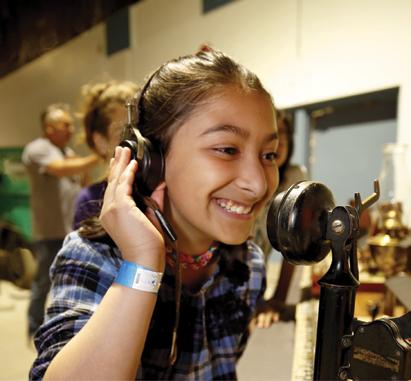


Foster curiosity, critical thinking skills and empathy by learning about Saskatchewan’s diverse histories through WDM exhibits, artifacts, archival material, curriculum-connected inquiry-based learning opportunities and hands-on experiences.
For information on visiting a WDM, in-Museum school programs, teacher-led experiences, virtual programs, resources for your classroom and an opportunity to save 10% on your next trip to the WDM visit wdm.ca/education Book today using discount code STF2024
SASKATCHEWAN SCHOOL BASED LEADERS



You can now take advantage of STF Professional Learning courses virtually, at your own pace. Delivered through Canvas, STF Professional Learning offers a variety of asynchronous learning opportunities, including:
• Outcomes Based Assessment for High School Learning
• Nurturing Emergent Literacy in Play Based Outdoor Education
• Class Complexity: Autism & Functions of Behaviour
OCTOBER 23-24
NOVEMBER 24-25
STF Arbos Centre for Learning, Saskatoon
9 a.m. - 4 p.m.
In this two day intensive, teachers will broaden their awareness of disparities within the education system, and assumptions and ideologies that perpetuate ongoing inequalities.
STF Arbos Centre for Learning, Saskatoon
9 a.m. - 4 p.m.
Created in partnership with the ARC Foundation, this two day participatory intensive will equip attendees with tools, resources and curriculum connections to be inclusive of 2SLGBTQ+ identities in your classroom.
For additional event listings and registration information, visit the Events Calendar at www.stf.sk.ca.

As part of our commitment to Truth and reconciliation and promoting diversity and inclusion, we are pleased to highlight a few upcoming celebrations and days of recognition in June.
à Pride Month
à National Indigenous History Month
à Filipino History Month
à Italian Heritage Month
à Portuguese Heritage Month
à June 21: National Indigenous Peoples Day
à June 24: Saint Jean Baptiste Day
BY: LANCE HILTZ, STF COMMUNICATIONS
In his keynote address entitled Something We May Have Never Seen Before, the award winning writer, editor, activist, Anishinaabe scholar and columnist Dr. Niigaan Sinclair spoke to attendees about Indigenous education during this year’s STF Leadership Symposium.
Sinclair shares what he describes as the four struggles youth must be ready for: economy, environment, escalating conflict and existence. He stressed the need for young people to learn how to integrate Indigenous rights in their everyday work, and to know how to work with Indigenous communities without creating more conflict. The result of that, he shared, will be a healthy economy, a healthy environment and a sustainable future.

“When we create or embody or situate ourselves with Indigenous education at the centre, we not only feel the obligations and promises that have been made in the past, but we also secure the future.”
“There’s something very unique happening on the prairies, particularly Northwest Ontario, Manitoba and Saskatchewan,” says Sinclair. “There is a high proportional Indigenous population in these places, meaning that every single person is talking about reconciliation, teaching about reconciliation, embodying reconciliation in their everyday work in schools. This is leading to a competent young generation in front of us, and this new generation is showing us things we’ve never seen before.
“When we create or embody or situate ourselves with Indigenous education at the centre, we not only feel the obligations and promises that have been made in the past, but we also secure the future,” he says. “We secure a future in which we don’t have to just wear an orange shirt on September 30 – we live that message every day. By doing this, we’re creating a better Canada.”
“We secure a future in which we don’t have to just wear an orange shirt on September 30 – we live that message every day. By doing this, we’re creating a better Canada.”

This year’s Leadership Symposium took place in Saskatoon on March 27 and 28 and was the third instalment of the annual symposium so far. Since 2023, the Leadership Symposium has invited STF members who are in, or aspiring to, roles as principals, vice principals and assistant principals, women in leadership, Indigenous leaders and governance leaders to come together for two days of networking, mentoring, collaborating and professional learning with colleagues from across the province.
Dr. Sinclair’s new book, entitled Wînipêk: Visions of Canada From an Indigenous Centre, is available now. From the inside cover: “This is a book that demands change and celebrates those creating it, that reminds us of what must be reconciled and holds accountable those who must do the work. It’s a book that pulses with the power that comes from loving a place, even as that place is violently taken away from you, and the magic of finding your way back to it.”

The Annual Meeting of Council was held in Saskatoon April 30 to May 3. Approximately 250 councillors gathered to debate and vote on resolutions and participate in STF Executive elections. More details on what was passed is available in the Report to Members.
1. Re elected STF President Samantha Becotte addresses Council.
2. STF Executive Director Angela Banda delivers her update to Council.
3. Canadian Teachers’ Federation President Heidi Yetman talks about the important role of teachers and teacher organizations in protecting public education.
4. LEADS Executive Director Ben Grebinski speaks to Council.
5. SSBA President Dr. Shawn Davidson delivers remarks and speaks of sector collaboration.
Councillors vote on resolutions.


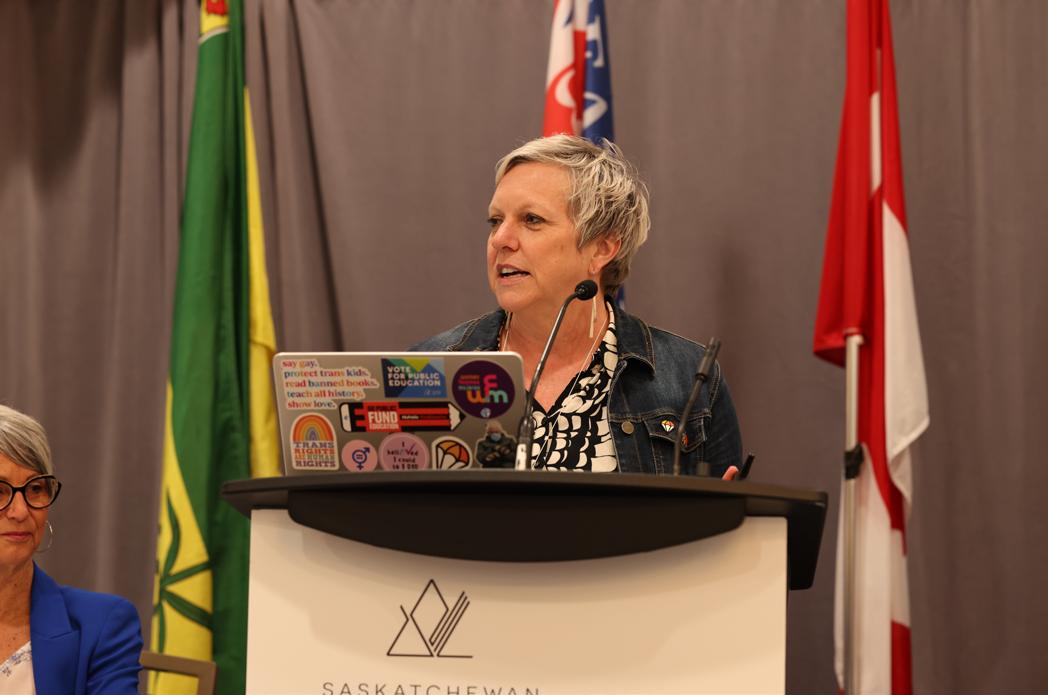

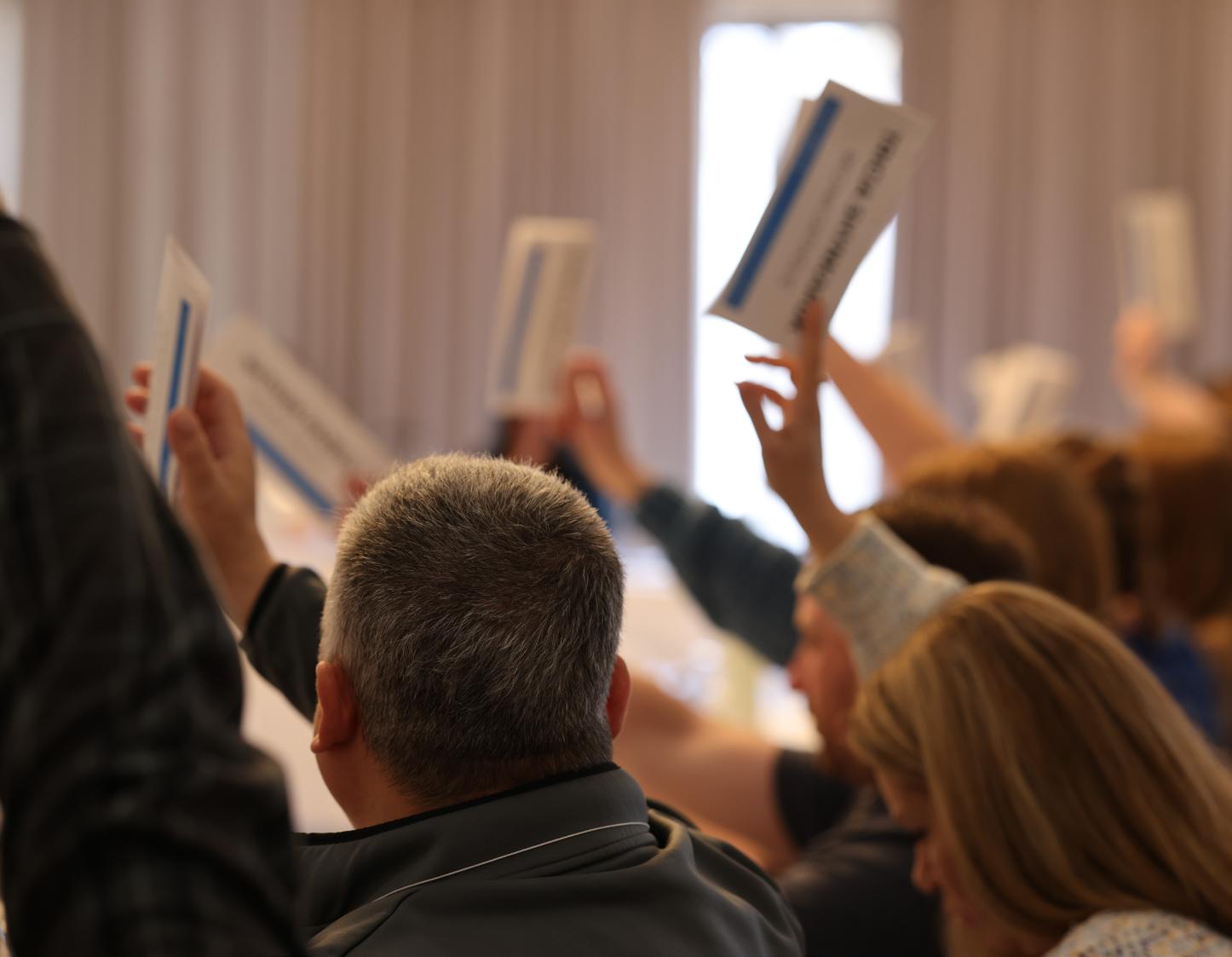


Follow us on social media for bargaining updates, advocacy efforts, member spotlights, plus the latest industry news and insights.
We’ve also launched STF Learning , your new destination for professional development, classroom resources and expert-led content.
https://linktr.ee/ STFSocialMedia
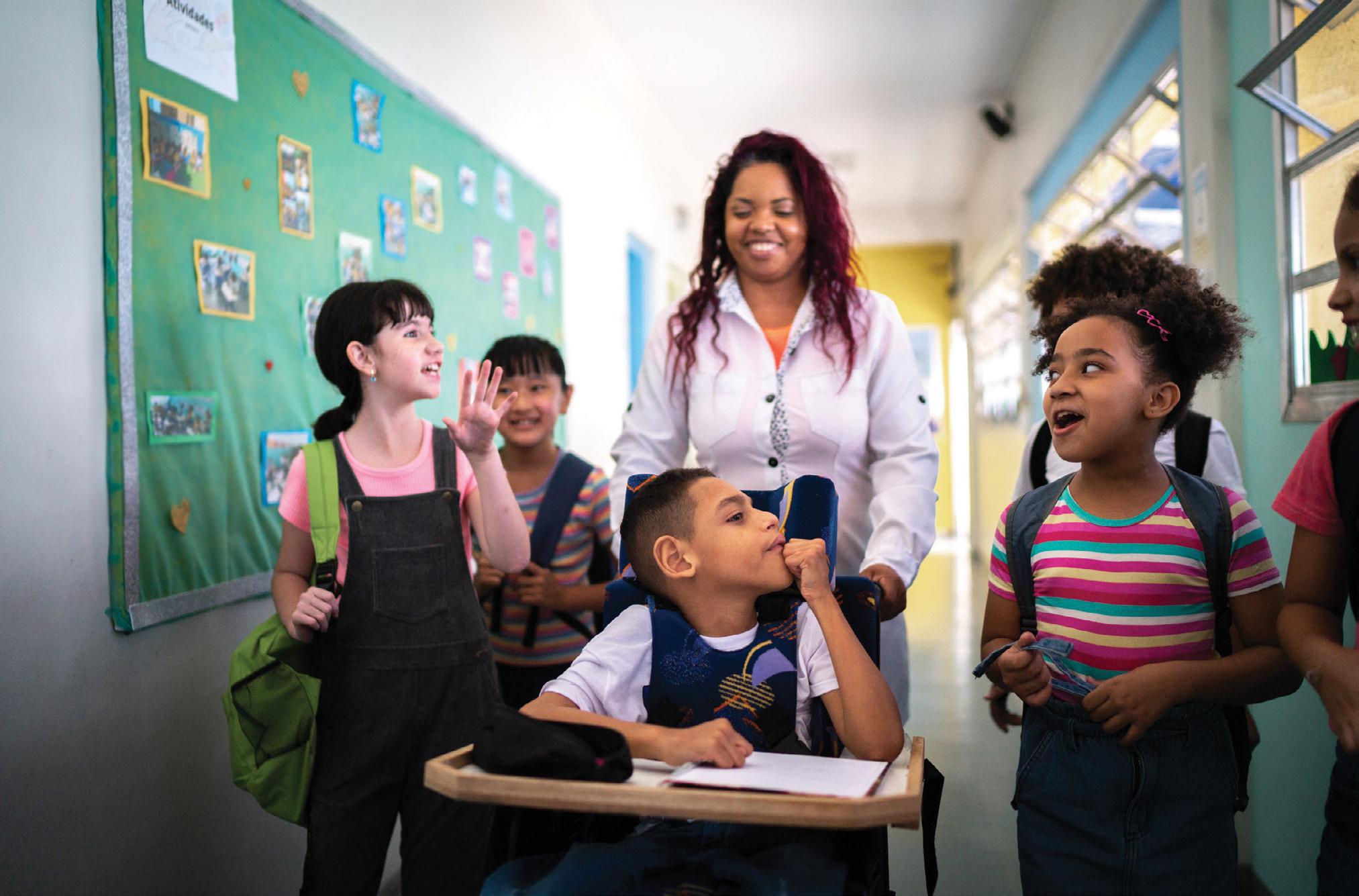



BY: JOAN ELLIOTT, ESRC LIBRARIAN AND MANAGER
Did you know the STF has a library to serve members? The Emma Stewart Resources Centre has an exciting array of teaching resources. Visit in person or contact us to request materials. The mailout service is free to wherever you are in the province, and we prepay the return postage for you.



Produced by Redcloud Studios and distributed by McIntyre Media, the 10 DVDs in this engaging series explore Indigenous history and ancestral knowledge as a means of decolonizing the present reality and of building a brighter future. Some titles in the series include: Awaken, Revitalize, Reclaim, Recover and Restore.
2. GO SHOW THe WOrLD: A CeLeBrATION OF INDIGeNOuS HerOeS
This vibrant picture book, written by Wab Kinew and illustrated by Joe Morse, is a rap song which highlights the inspirational achievements of well and lesser known Indigenous people such as Beatrice Culleton Mosionier, Dr. Evan Adams, Carey Price and Waneek Horn Miller, in addition to Indigenous heroes from south of the border.


3. INDIGeNOuS PeOPLeS WITHIN CANADA: A CONCISe HISTOrY, 5TH eD.
Authors Olive Patricia Dickason, William Newbigging and Cary Miller provide a comprehensive portrait of the history of Indigenous Peoples in Canada from origin stories to the present day in this scholarly, yet accessible, classic text. Indigenous voices and art are featured throughout, and numerous timelines, charts and maps are included.
Written by Tasha Hilderman and illustrated by Risa Hugo, this beautiful picture book features a group of children who explore their heritage with family members by making bannock, going fishing, picking Saskatoon berries, beading, telling traditional stories, fiddling and jigging. The book states that it is never too late to learn about and celebrate the history and culture, whether one is Métis or not.


This informative and colourful picture book by Heather C. Hudak is part of the Canadian Celebrations series. It clearly outlines the history of the day and describes cultural events that are held throughout the country in celebration of the heritage of Indigenous Peoples.
Jody Wilson Raybould and Roshan Danesh present an important retelling of Canadian history through the voices of both Indigenous and non Indigenous Peoples in this innovative book. Using the totem pole as a framework, the authors encourage us to look at history from different angles and perspectives in order to discover what has been missing from the history we have been told, and to foster understanding of a more inclusive and fully rounded representation of our history.



Geared to middle grade and secondary students, this volume by Frank James Tester and Krista Ulujuk Zawadski delves into the devastating impact of the forced relocations of Inuit communities as well as the removal of children who were placed in settlement based federal schools after World War II. The book also chronicles Inuit resistance to these racist policies, in addition to their achievements in gaining some measures of self government and control over resource development, while also building a strong cultural life through the arts and literature.
WHO
This remarkable memoir by the late Honourable Murray Sinclair, as told to Sara Sinclair and Niigaan Sinclair, is an oral history of his own story, as well as that of Canada. Organized around the following four questions: Where do I come from?; Where am I going?; Why am I here?; and Who am I?, Sinclair describes the experiences that formed him as an Anishinaabe man, and presents his perspectives on Indigenous identity, justice, Canada’s colonial history, and Indigenous resistance and resilience, as well as his vision for a more inclusive future for all. The What We Have Learned report by the Truth and Reconciliation Commission of Canada is included.


BY: SUE AMUNDRUD, PRESIDENT, SUPERANNUATED TEACHERS OF SASKATCHEWAN
So, you are starting to think about retirement, and you are wondering: Am I really ready? Can I actually afford to retire? What will retirement look like?
And the, perhaps unhelpful, answer is – it is different for each of us; however, there are common themes that arise as we talk to members of our organization.
Let me start by introducing who we are. We are the Superannuated Teachers of Saskatchewan, or STS for short, and we currently have over 12,000 members. Our organization began over 50 years ago to help retired teachers facing challenges of dealing with inequitable and inadequate pensions. The combined activities of the STS and the Saskatchewan Teachers’ Federation eventually led to provincially bargaining guaranteed pensions and cost of living adjustment clauses. It’s a long story that I’d love to share with each of you, but that isn’t the point of this article.
With our members, one of the common themes we hear is, “I knew it was time.” Many mention new priorities – supporting aging parents or being able to help with grandchildren are prime examples. Others speak of losing the joy of teaching – that it was beginning to be a chore rather than something they looked forward to each day. Whatever the reason, there is something moving the individual toward this change.
Retirement truly is a change, and you must expect there to be a transition. Teaching is one of those careers that
can become all encompassing, taking up a significant amount of your time. Often our identity is wrapped up in our occupation – we are teachers! And, depending on your teaching situation, your colleagues may very well be a significant part of your social life outside of work – that was true for me. Suddenly, you have “free time,” and your colleagues and friends continue to be busy with work demands. Unless you plan to be a substitute teacher, which can ease your transition, you need to find other opportunities to fill some of that time.
Studies indicate that for continued health, it is important to have connections – in fact, social isolation has been shown to have a negative impact on health comparable to being a lifetime smoker. And our members have said they found they needed a sense of purpose – some way in which to keep involved and feel like they are making a difference.
You may not realize it yet, but retired teachers are very much in demand. We retire with a skillset that can be useful in many ways and in many situations. So, whether you are an introvert or an extrovert, someone who prefers flexibility or would rather have a planned schedule, there is something out there that will suit you.
Many have said they were looking forward to “doing nothing.” They just wanted time to relax and catch their breath. But I haven’t yet met one who made it through a full year on that decision. And travel, while attractive, is not something you can do continuously.


We have members who have taken on, for at least a period of time, paid work – part time, or as a consultant, or even subbing.
We have members who volunteer in an area of interest. They volunteer at a museum, at a local food bank, or with the local SPCA. They support fundraising in a variety of ways within their community. They join that service organization that always rather intrigued them, but for which they didn’t have time. Some even run for school board trustee!
Whatever you choose should be something you value – that was another key message from our retirees. Pick something that is important to you, that you always
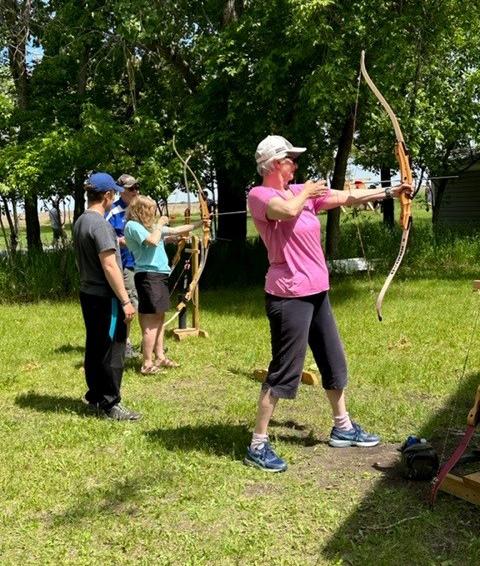

thought was interesting (e.g., a new hobby), that gives you a sense of purpose – a reason to get up every day.
The STS offers a free two hour session on retirement lifestyles that can be requested from our office by any local association. This can fit into a professional development day, or as an after school session. The STF and your financial advisor can help you with the financial side of things at a certain level – although that is part of our session as well. But we focus on different aspects –handling the transition, the importance of social networks, taking care of your health, and other things that you may not have considered. If you are interested in booking one of these sessions, please contact our office at 306 373 3879 or sts@sts.sk.ca for more information.




BY: LANCE HILTZ, STF COMMUNICATIONS
On March 10, 2025, the Government of Saskatchewan and Government of Canada announced the signing of a $15.8 million three year agreement as part of the National School Food Program. The Saskatchewan Teachers’ Federation applauds this agreement and looks forward to its implementation for students across the province.
“We are excited to see the provincial and federal governments moving this critical program forward,” says Saskatchewan Teachers' Federation President Samantha Becotte. “There is significant data linking students’ learning outcomes and access to nutritious food. This program will help make sure that more children can focus on reading, math and other lessons without having to worry about their next meal.”
The Canadian Teachers’ Federation ran a nationwide campaign calling on the public to encourage their provincial governments to sign on to this critical program.
As of March 10, all provinces and territories have signed agreements with the federal government for school food program funding.
“We thank all member and associate organizations in calling on provincial and territorial governments to come to the table and sign National School Food Program agreements across the country,” says Canadian Teachers’ Federation President Heidi Yetman. “At a time when the cost of living is the highest in recent memory, this essential program is saving Canadian families money while also bringing nutritious food to Canada’s most vulnerable. This program was long overdue.”
In their March 10 news release announcing the signing, Education Minister Everett Hindley shared his thoughts on the program. “We recognize that basic nutrition at school contributes to positive student outcomes including improved academic work, initiative, class participation
and problem solving. This funding will make a difference and allow us to continue to support the well being of children and families who need it most across our growing province.”
“This investment will help to support the growing need for school food programs and student nutrition in our province,” says Saskatchewan School Boards Association President Dr. Shawn Davidson. “Our association adopted a resolution in 2023 to advocate provincially and nationally with the Canadian School Boards Association for the development of a healthy, universal, cost shared school food program funded by the federal and provincial governments in consultation with all school boards. Our efforts, along with many other like minded organizations and partners, have helped.”
Existing school food programs in the province will be better supported through this funding and available in more schools. According to a March 10 news release from the Government of Canada, Saskatchewan families with two children in school can save an estimated $800 in grocery bills a year, on average, through this agreement.

BY: LESLEY PORTER, STF COMMUNICATIONS, AND COURTNEY FORSETH, STF COMMUNICATIONS
The Federation is set to launch its next strategic plan on July 1. Direction 2030 identifies the STF’s vision, mission, values and strategic directions. The new strategic plan is a document created and approved by the STF Executive. Former Executive members Neal Boutin and Gwen Paul guided its creation in the early stages. Current Executive members Amy Korver and Whitney Paul Joseph acted as co chairpersons in finalizing the strategic plan.
“This new strategic plan has been developed over several years and includes feedback from the members through Council. We also ensured involvement of underrepresented groups by facilitating feedback through various STF committees,” says co chairperson Amy Korver.
Whitney Paul Joseph echoes Korver’s comments, saying, “Teacher voice was crucial to the development of Direction 2030. I am proud of the collective efforts of so many people in creating this strategic plan.”
At the core of Direction 2030 is a renewed focus to our 13,500 members located across Saskatchewan, outlined by a set of six shared core values:
þ Public Education: High quality public education is a universal right for all children and youth, with responsibility shared by government, boards of education, the teaching profession and the public.
þ Teacher Professionalism: Teachers are experts in their field and can exercise professional knowledge, judgement and autonomy.
þ Commitment to Truth and Reconciliation: The Federation advances this work in many ways, including integrating Indigenous languages in teaching and educating on the truths of settler colonialism.
þ Diversity, Belonging and Human Rights: Systemic barriers are identified and removed, and safe, supporting teaching and working environments are promoted.
þ Quality Service to Members: The Federation takes a member centric approach in everything it does.
þ Collectivity: The strong collective voice of 13,500 members is not just the teachers’ voice but also a force that builds solidarity and strengthens teacher professionalism in the public eye.
The document also contains updated strategic directions for the next five years. This includes teaching and learning, stakeholder relations, teacher efficacy and well being, Federation governance, and operations.
“Direction 2030 serves two functions: It is a roadmap from the Executive, which sets the direction for the work of the organization over the next five years. It is also a public statement that outlines the values of the organization,” says STF President Samantha Becotte. “STF staff will now operationalize the plan by relying on the goals, priorities and values to guide their work in support of teachers.”
STF Executive Director Angela Banda says this document is an important tool to guide the work of STF staff. “The priorities and goals outlined in this document guide all STF operational decisions. Staff will reference Direction 2030 in operational planning, budgeting and allocation of resources.”
Visually, the design pulls inspiration from the STF’s prism logo but presents a different point of view. It showcases the multi dimensional elements of the prism, refracting light and displaying an array of colours. One of the STF’s graphic designers says, “The colours not only depict a prism, but also the many facets of the STF as an organization and its diverse membership.”





BY: NICOLE TURCOTTE, ASSOCIATE DIRECTOR, STF PROFESSIONAL LEARNING, AND DR. NATHALIE REID, DIRECTOR, CHILD TRAUMA RESEARCH CENTRE AND ASSISTANT PROFESSOR, TRAUMA INFORMED TEACHING
Many children and adolescents experience trauma that can affect their behaviour, learning and overall well-being. While it is not the professional role of teachers to provide diagnoses or clinical supports to individuals or families, schools that implement trauma-integrated approaches recognize the impact of trauma and actively work to create conditions that support healing and resilience. Rather than a checklist of strategies, trauma-integrated practices represent an ongoing commitment to fostering supportive and responsive environments. The Child Trauma Research Centre at the University of Regina consolidates the research into six key commitments that guide this approach:
Safety: Providing predictable routines, clear transitions and clean, organized settings shape the experiences of safety.
1 2 3 4 5 6
Trust: Being open and transparent. Predictable expectations and consequences for behaviours and a willingness to authentically listen to what the student or caregivers have to say and respond to their identified needs.
Relationships: Caring about the individual, centring the person rather than the content, understanding that children and youth can show their learning in multiple ways, and shaping experiences that support them to do so.
Choice and Control: Offering a sense of choice allows one to feel in control over their being, space, body, learning and time.
Wholeness and Belonging: Recognizing the whole person as part of dynamic ecosystems, building on strengths and contributing to a sense of belonging.
Intersectionality: Recognizing that trauma comes in many forms, across many generations and is supported and sustained in and by the systems in which we find ourselves. Even the very structure of schools can be (re)traumatizing.
These commitments ensure that trauma awareness is woven into daily interactions, policies and instructional practices, rather than treated as an isolated initiative.
With so many terms used to describe trauma responsive education, it can be easy to feel confused about what they all mean. Trauma informed schools focus on building awareness of trauma’s impact among staff and students. Trauma sensitive schools take this a step further by intentionally fostering and prioritizing relationships as they adapt instruction and create environments to support students with trauma histories. Trauma integrated schools fully embed trauma responsive approaches into every aspect of school operations. This includes assessing practices, implementing disciplinary procedures that prioritize restorative approaches, and revising school and system policies that do not fully align with trauma sensitive care. In trauma integrated schools, creating a healing centred environment is not just an initiative – it is fundamental to how the school functions.
Trauma sensitive and trauma integrated schools support students by implementing strategies that prevent and respond to unexpected behaviours, teach skills to empower students to face challenging situations, and ensure consistent and predictable ways to recognize expected behaviours in supportive ways. When students feel safe and connected to their school community, know what to expect, and how to respond, they are better prepared to focus on learning and social interactions.
By embedding trauma integrated practices into school culture, educators can create environments that are not only academically enriching but also emotionally supportive. When students feel safe, valued, understood, and equipped with strategies, they are better prepared to learn and develop the resilience needed for future success. Schools that commit to trauma integrated education contribute to a more equitable and compassionate experience for all students, staff and families.
Sources:
Child Trauma Research Centre, University of Regina. (n.d.) Six Commitments of Trauma-Informed Practice
Child Trauma Research Centre, University of Regina. (n.d.)
Understanding What the Words Mean: Trauma, Traumainformed, & Trauma-sensitive. Retrieved from https://www. childtraumaresearch.ca/assets/1 understanding what the words mean.pdf
Eber, L. Barret, S. Scheel. N, Flammini, A. & Pohlman, K (May 2020). Integrating a Trauma-Informed Approach Within a PBIS Framework. Eugene, OR. Center on PBIS, University of Oregon. Retrieved from www.pbis.org
Eller, J. F. & Hierck, T. (2021) Trauma-Sensitive Instruction: Creating a Safe and Predictable Classroom Environment. Solution Tree Press.
Gross, K. (2020). Trauma Doesn’t Stop at the School Door: Strategies and Solutions for Educators, PreK-College. Teachers College Press.
Keels, M. (2023). Trauma Responsive Educational Practices: Helping Students Cope and Learn. ASCD.
Stokes, H. & Brunzell, T. (2024). Implementing Trauma-informed Pedagogies for School Change: Shifting Schools from Reactive to Proactive. Emerald Publishing Limited.
The University of Regina Centre for Continuing Education offers a TraumaInformed/Sensitive Pedagogies and Practices Micro-certificate? The course was designed in partnership with STF Professional Learning and the Child Trauma Research Centre at the University of Regina.

Cut this page out and save it.
Prevention strategies create a predictable and supportive environment where students feel safe and supported.
• Establishing clear expectations for behaviour helps students understand what is required of them and reduces anxiety.
• Consistency in routines and positive relationships between students and staff also play a crucial role in fostering a sense of security.
• Reducing visual and auditory stimulation supports students in regulating emotions and decreases hypervigilance.
Encouraging expected behaviours requires a proactive approach that includes positive reinforcement and structured supports.
• Providing specific verbal praise that recognizes and celebrates expected behaviours and achievements helps to reinforce them, making students more likely to repeat those actions.
• Providing checklists and visual schedules can also reduce anxiety and help students feel more in control of their environment.
Teaching students essential skills for managing their emotions and interactions is another key component of trauma-integrated practice.
• Help students practice emotional regulation techniques, such as deep breathing, mindfulness and self reflection in times of low stress.
• Instruction in social skills and problem solving can equip students with strategies for effective communication, conflict resolution and empathy.
When unexpected behaviours occur, it is essential to respond in ways that de-escalate the situation in ways that align with the six commitments.
• Restorative practices, such as structured conversations that focus on repairing relationships, can help students reflect on their actions and learn from their experiences.
• Offering calming techniques, such as quiet spaces, movement breaks or grounding exercises, can help students regain control of their emotions before engaging in problem solving or returning to learning.
• Understanding behavioural challenges as communication and approaching them with curiosity rather than punishment supports students to feel seen.
BY: SARAH MACDONALD, STF COMMUNICATIONS
As of July 1, 2025, a $10 drug deductible for prescription medications will be implemented. This means members will be responsible for paying the first $10 of the cost per prescription. After meeting this deductible, regular prescription drug benefits, if applicable, will apply, covering the additional cost of the medication.
The Pension and Benefits Board of Directors regularly conducts a review of the Plan’s benefits, design and funding, taking into consideration Council resolutions and teacher feedback. They examine impacts that changes to the Plan may have on members and compare the Plan to industry standards.
The most recent review began earlier this year and confirmed the findings from previous reviews, which found that substantially rising health care costs could impact the long term sustainability of the Plan if no action was taken. The Board of Directors examined different options and determined that introducing a $10 deductible was the best option to help ensure the Plan’s short term stability.
Drugs represent approximately 50 percent of the total cost for the Plan. In 2024, members submitted 305,271 prescriptions, paying out close to $13 million in benefits. A $10 deductible will reduce drug costs by approximately $3 million per year.
Drug deductibles are very common, even in the Members’ Health Plan. A drug deductible was previously in place as recently as 2019. They are an equitable way for members to share in drug costs and $10 is approximately equal to the average drug dispensing fee that pharmacists charge. You can work with your pharmacist to see if your prescriptions are eligible for 90 day refills.
The reintroduction of a drug deductible does not solve the problem of the rising health care costs, but it will buy the Plan some time before other changes to benefits or an increase in funds to the Plan are required.


BY: LANCE HILTZ, STF COMMUNICATIONS
Jonah Toth is founder and executive director of Passion2action, a nonprofit, grassroots youth empowerment organization in Saskatchewan. For the past two years, Toth and his team have partnered with the Saskatchewan Teachers’ Federation to create and implement the Connect School Community Microgrant Program, which provides microgrants of up to $500 to teachers across the province to support projects that build student leadership skills and connections within school communities. The STF funds the program as part of its sponsorship and community investment efforts, and the Passion2action team of volunteers connects teachers with microgrant funding and support.
“Connect has been such a wonderful partnership between Passion2action and the STF,” says Toth. “We get to help teachers bring their students out into their communities, and help students learn the importance of connecting with their broader community in a hands on way.
“Post pandemic, we were seeing that schools and teachers were looking for opportunities to engage with the community outside their school walls. The Connect program has been such a meaningful way to help facilitate that and to recognize all the great supports that teachers provide to their students in and out of the classroom. Teachers are building up the next generation of leaders in this province.”
Connect projects align with one or more of the program themes – arts and culture, citizenship and activism, environmentalism, social and emotional well being, and Truth and Reconciliation. Leadership and skill development modules are available to teachers throughout the year, and virtual sessions give teachers a chance to network,
share about their projects and support one another from across the province. The first cohort of teachers in 2023 24 supported 12 teachers from schools throughout Saskatchewan. This year, the program supported 10 teachers from seven different school divisions and nine communities.
One of the teachers in the 2024 25 cohort is Merrissa Karmark from Englefeld School. Her microgrant project saw Grades 7 to 10 practical and applied arts students build birdhouses with clients at Humboldt’s Futuristic Industries. Futuristic Industries is an organization that provides vocational training, residential support, recreational opportunities, employment support, individual programming services and community involvement for people living with disabilities. Futuristic Industries’ clients precut boards in their woodshop and instruct students through assembling the birdhouses. As of this writing, Karmark plans to have students place the birdhouses around the school in the spring, which will support species diversity in the community.
“We have lots of really dense spruce trees, open quiet areas and natural brush around the school,” Karmark says. “There are lots of different birds that come through the town of Englefeld, but not a ton of feeder locations that get maintained throughout the year. We wanted to create space to welcome species into our community and school grounds.
“Working with Futuristic Industries was such a great experience,” she says. “We don’t have a woodshop at our school, and my kids are really interested in woodworking
and building. It was really cool to see the clients at Futuristic Industries share their skills. For a lot of students, it was their first time holding a drill. And Futuristic Industries was super excited about the project; they were on board right away. They were a really great partner. The project helped achieve a few different goals in a really meaningful, concrete way. And we wouldn’t have been able to do this project in the same way without the microgrant.”
Shelley Deck from Kelliher School is another member of this year’s Connect teacher cohort. She received microgrant funding for a project entitled Better Together: Arts in the Classroom, which is a day of rotating workshops in the school, put on by teachers, parents, students, invited guests, artists and community members. These workshops will be made available to all students in the school, prekindergarten to Grade 12. Students had a large role in planning the event.
“Students have been guiding us in terms of what they want to see, and we try to give them as much agency as possible. We’re getting kids excited about being in school,” she says. “We are working with SaskCulture, and part of the microgrant money we received will go towards getting those artists out into our rural area, because we are an hour and a half away from the larger centres. We do everything that we can to make sure that we’re not

living in a silo, and that the school is an integral part of the community. And Kelliher School is definitely the heart of our community.
“I want to make sure that [the STF] understands how grateful I am that you are giving people the opportunity to engage with these projects,” Deck says. “And not just for the kids, but for myself as an educator, I have found this program really, really inspiring. I don’t know what else to say except, I’m grateful. This program has made a difference in the work that it’s doing.”
On May 8, 2,000 students and teachers from across the province gathered in Regina or joined virtually for this year’s Inspire event. Inspire is Passion2action’s flagship youth empowerment event dedicated to introducing Saskatchewan youth to inspiring local role models, raising awareness for important local and global issues, and helping young people recognize their potential to be active citizens and community leaders. This year, Inspire featured a presentation celebrating the work of the first Connect cohort of students and teachers. You can find the video from the event by scanning the QR code below.
Every STF member is eligible to join a professional growth network to build connections with like-minded educators. With more than 20 networks available, there is a PGN to support your professional growth!
Everyone can win! Teachers who select a PGN between June 1 and September 15 will be entered in a draw for a $100 gift card from a list of Saskatchewan businesses! And, if you are referred to your new PGN by a colleague, the referring teacher will also be entered to win!
BY: STAFF WRITER
In early 2024, the Canadian Teachers’ Federation (CTF/ FCE) was invited to meet with the Minister of Finance to talk about policies to improve affordability in Canada. At that meeting, one of CTF/FCE’s specific asks was to obtain federal loan forgiveness for teachers to help alleviate their costs and to help attract and keep more teachers in the profession. CTF/FCE is thrilled that the federal government has made this policy change that we know will benefit many of our members and communities that have been historically underserved in Canada.
In the February 15, 2025, edition of the Canada Gazette, the Government of Canada newspaper, the federal government announced further details on the program. Teachers who work in communities of 30,000 people or less (according to census figures) will be eligible for portions of their federal student loan to be forgiven. The definition of an eligible

rural or remote community for the loan forgiveness benefit was changed by regulations that came into force on November 6, 2024. An eligible community is now defined as a “population centre with a population of no more than 30,000, or a rural area.” The CTF/FCE anticipates that closer to the implementation date, people will be able to confirm eligibility by entering their postal code into a tool on the Government of Canada website.
Teachers who qualify would be eligible for up to $30,000 in loan forgiveness over 5 years. The maximum annual forgiveness amount will be $4,000 in year one, $5,000 in year two, $6,000 in year three, $7,000 in year four, and $8,000 in year five. Loan forgiveness is expected to begin on November 1, 2025.

The Saskatchewan Teachers’ Federation Executive, which is elected by Council from its ranks, manages and regulates the activities of the Federation. The members must ensure the organization is acting in accordance with its legislated mandate and fiduciary commitments. Among their responsibilities is the establishment and appointment of members to the benefit plan boards and various committees.

At the Annual Meeting of Council held April 30 to May 3, 2025, the following individuals were elected to the Executive of the Saskatchewan Teachers’ Federation.
President
Samantha Becotte, Lloydminster Teachers ’ Association
Vice-President
Nathan Bromm, South East Cornerstone Teachers ’ Association
Member-at-Large
Daniel Dion, Association locale des enseignantes et enseignants fransaskois
Member-at-Large
Peggy Welter, Prairie Valley Teachers ’ Association
Member-at-Large
Amy Korver, Prairie Spirit Teachers ’ Association
Member-at-Large
Whitney Paul-Joseph, South East Cornerstone Teachers ’ Association
Returning Executive Members
Two-year term, July 1, 2025 to June 30, 2027
Two-year term, July 1, 2025 to June 30, 2027
Two-year term, July 1, 2025 to June 30, 2027
Two-year term, July 1, 2025 to June 30, 2027
Two-year term, July 1, 2025 to June 30, 2027
Two-year term, July 1, 2025 to June 30, 2027
The following individuals were elected in 2024 to serve a two-year term from July 1, 2024 to June 30, 2026.

Regina Catholic Schools Teachers ’ Association
Tri-West Teachers ’ Association , Prairie Spirit Teachers ’ Association
Horizon Teachers ’ Association
Read about Council final decisions and results in the 2025 Annual Meeting of Council Report to Members . In addition, the Reports to Council, STF Executive election results and the final plenary resolution and election results can be viewed online at www.stf.sk.ca > About the STF > Our Team > Council > Annual Meeting of Council 202 5 , when you log in through MySTF.